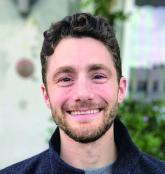Opinion

Let’s talk about race
- Author:
- Sahana Malik, MD
Publish date: July 28, 2021
Avoiding these necessary conversations perpetuates the trauma of those we treat, said Dr. Sahana Malik.
Opinion

Excited delirium: Is it time to change the status quo?
- Author:
- Benjamin Amendolara, MD
- Sahana Malik, MD
- Alan A. Abrams, MD, JD
- Nicolas Badre, MD
Publish date: November 24, 2020
The term comes at a cost, and there is concern of its disproportionate application to Black people, several psychiatrists contend.
Opinion

‘Defund the police’: An important moment for society and psychiatry
- Author:
- Sahana Malik, MD
- Benjamin Amendolara, MD
- And Nicolas Badre, MD
Publish date: July 20, 2020
Psychiatry can and should be much more than what it once was, according to Dr. Sahana Malik, Dr. Benjamin Amendolara, and Dr. Nicolas Badre.
